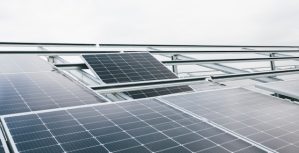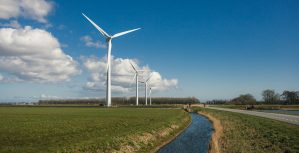Harnessing the Sun: Benefits of Solar Panels and Essential Installation Tools
As the world increasingly turns to renewable energy sources, solar panels have become a cornerstone of sustainable development. However, the adoption of solar technology isn’t merely about choosing the right panels; it’s also about navigating the complex world of solar panel tariffs. These tariffs can influence costs significantly, making an understanding of their impact as crucial as the technology itself. In addition, one must also be informed about the most suitable tools for the assembly and upkeep of solar panels to avoid inconveniences. In this article, we will explore the advantages of solar panels and provide a guide to the best tools for their installation and maintenance.
The Advantages of Solar Panels
Why choose to use solar energy? Here are some good reasons:
- Environmental Impact: Solar panels provide a clean, renewable source of energy, reducing reliance on fossil fuels and decreasing carbon emissions. This shift is crucial for combating climate change, as well as promoting environmental sustainability.
- Energy Independence: By the utilization of solar panels, homeowners and businesses can generate their electricity, thus reducing their dependence on the grid. This not only secures an energy future but can also protect against fluctuating energy prices.
- Financial Savings: Despite the initial installation costs, solar panels offer long-term savings by lowering electricity bills. In many regions, users can also benefit from government incentives, rebates, as well as tax breaks.
- Increased Property Value: Homes and commercial properties equipped with solar panel systems often see an increase in value, making them more attractive in the real estate market.
Tools for Installation and Maintenance
Installing and maintaining a solar panel system requires precision and care, which is facilitated by using the right tools. Here’s a guide to some essential tools for anyone looking to install or maintain their solar system:
Installation Tools
- Solar Pathfinder: This tool helps in identifying the most suitable location for solar panels by mapping out where shadows fall throughout the day, ensuring maximum sunlight exposure.
- Torque Wrenches: Used to ensure that all bolts and nuts on solar mounts are tightened to the manufacturer’s specified torque value, critical for the structural integrity of the installation.
- Drill/Driver Sets: Essential for attaching mounting equipment to roofs or other structures, these should be of high quality to handle the rigors of installation.
- Fixing Systems: Critical for ensuring the secure attachment of solar panels to rooftops. They must withstand environmental stresses such as wind and rain, ensuring the long-term stability and safety of the installation. Among these, Fischer fixings are highly recommended due to their superior engineering and reliability. These tools provide exceptional hold and durability, even in the most demanding conditions.
Maintenance Tools
- Solar Panel Cleaning Kits: Keeping solar panels clean is crucial for maintaining their efficiency. These kits usually include a biodegradable soap, a soft brush, along with a squeegee or hose attachment.
- IR Cameras: Infrared cameras can detect hot spots in solar panels, which are indicators of potential issues like electrical faults or junction box anomalies.
- Multimeters and Clamp Meters: These tools are essential for monitoring the electrical output of solar panels, plus ensuring that they are operating within expected parameters.
Understanding Solar Panel Tariffs
Tariffs on solar panels, often imposed to protect domestic manufacturing, can add a layer of cost to the adoption of solar energy. These tariffs may be levied on imported solar components, increasing the overall expense of solar systems for end-users. Prospective solar adopters need to stay informed about current tariff rates and possible exemptions or reductions that might apply, as these can significantly affect the cost-effectiveness of a solar investment.
Conclusion
While the installation of solar panels represents a significant step towards energy independence and environmental sustainability, the presence of tariffs can influence the decision-making process. By staying informed about these tariffs and equipped with the right tools for installation and maintenance, homeowners and businesses can maximize the benefits of their solar energy systems. As the solar industry continues to evolve, understanding these elements will be key to leveraging the full potential of solar technology.
Share It on :





